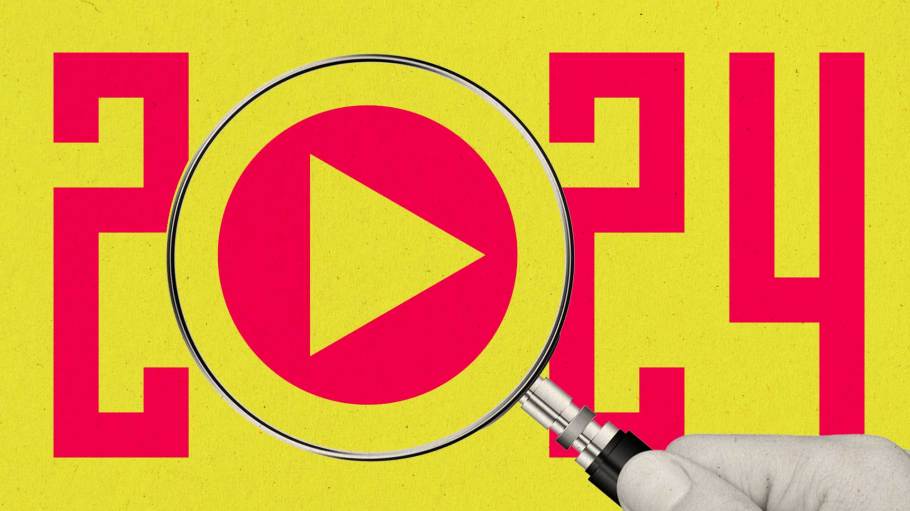Embattled Studios Face a Continued Uphill Battle in 2024
The media sector has little to celebrate this holiday season. As the major studios continue to face depressed share prices, crumbling revenue streams and an uphill battle to push their direct-to-consumer operations into profitability, Netflix’s victory in the streaming wars has become all but assured.
You could easily attribute that victory, or at least trace it back, to Netflix’s decade-long head start on building an audience and investing in the streaming experience. But it helped that its competitors, once they finally got into the SVOD business, bungled their way through nearly every step, from clunky user interfaces to poor branding to misbegotten content investments. (Somehow, Disney managed to turn a winning hand of the biggest franchises in the world into its worst crisis in decades.)
So here we are, more or less back where we started: Streaming is ascendant but unprofitable, theatrical and linear TV are declining, and everyone is licensing content to Netflix, with peak TV demolished and millions of dollars in shareholder value lost along the way.
The question now becomes whether there are any options left that would keep the legacy players competitive in the DTC game.
The obvious and most popular solution — consolidation — is already underway, with Paramount Global, Warner Bros. Discovery and Comcast all circling one another in a merry game of M&A musical chairs. The conventional wisdom goes that these smallest of the media giants must get even bigger if they hope to stand a chance of competing in the current landscape. (Never mind, of course, that WBD market value has plunged since its post-merger shares began trading in April 2022.)
What the ultimate rearrangement of the landscape will look like is still very much up in the air, of course. Wall Street’s adverse reaction to rumors of a Paramount-WBD merger last week would seem to suggest that deal is unlikely. David Zaslav’s pride could certainly interfere, however, if the WBD CEO would prefer to be seen as a buyer rather than being acquired by Comcast.
SEE ALSO: Netflix Won the Year — So, What’s Next?
But even if a WBD-Paramount deal does come to pass — and count me among the skeptics on that front — the companies’ combined streaming platform would still not stand much chance of seriously competing with Netflix.
Together, Paramount+ and Max typically account for just over 2% of monthly TV viewing time in the U.S., per Nielsen data. It’s hard to see how combining would boost that share, particularly as numerous Paramount+ subscribers would likely balk at the 33%-67% hike in the monthly cost of their plan. (And that’s assuming the new WBDP would maintain Max’s current prices for a combined SVOD, which is highly unlikely.)
The cost of acquiring Paramount would also take a significant toll on WBD’s balance sheet, with Zaslav & Co. already saddled with $45 billion in debt. With content spending already constrained, it seems doubtful this new mega-studio would have the financial firepower necessary to take on Netflix, despite a formidable IP and talent arsenal. (Think what Taylor Sheridan could do at HBO!)
Meanwhile, the only streaming players with such firepower at the moment — Big Tech interlopers Apple and Amazon — probably won’t be engaging with the M&A circus.
Apple has never gone in for such blockbuster deals, while Amazon has already made one legacy-studio purchase in MGM, and neither would want the regulatory scrutiny that would come with Paramount and its broadcast TV operations. Besides, both companies already have enough money on hand to truly challenge Netflix if they really wanted to, but it’s long since become clear that the tech giants’ Hollywood ventures are far from their top priorities.
There is one other path available to the traditional studios, one that former WarnerMedia and Hulu CEO Jason Kilar has already endorsed in the pages of Variety: “A modern everything product that consumers will adore” — i.e., a digital version of the old-school cable bundle.
Of course, as Kilar should know better than anyone from his days at Hulu, the studios are constitutionally incapable of that kind of coordinated attack (though Zaslav, for one, would seem to be in favor of it). Any bundling over the next year is far more likely to continue in the vein we’ve seen this year: limited combinations of a couple of services, often with a telecom intermediary to package the deal.
And while consumer demand for streaming bundles is poised to grow, there’s only so much these packages can do to shift the balance of power in the streaming game.
Telecom partnerships have limited reach, extending only to the relevant company’s broadband or cellular subscribers, and while good for bringing in incremental revenue, they are not exactly optimal for boosting engagement. (It’s very easy for users to forget they have access to a service through their cell phone plan, for instance.) Meanwhile, Netflix itself is taking part in some of these bundles, reducing any competitive advantage its rivals can reap from such arrangements.
Is there anything, then, that the studios can really do to rival Netflix at this point? Frankly, I wouldn’t bet on it. The legacy players must do whatever they can to simply weather the ongoing storm, whether that’s M&A, new forms of bundling such as the Disney-Charter pact or using their library content as currency to help fund their business. I predicted back in April that 2023 would be streamers’ year of trial and error; 2024 seems poised to be their year of “any means necessary.”

